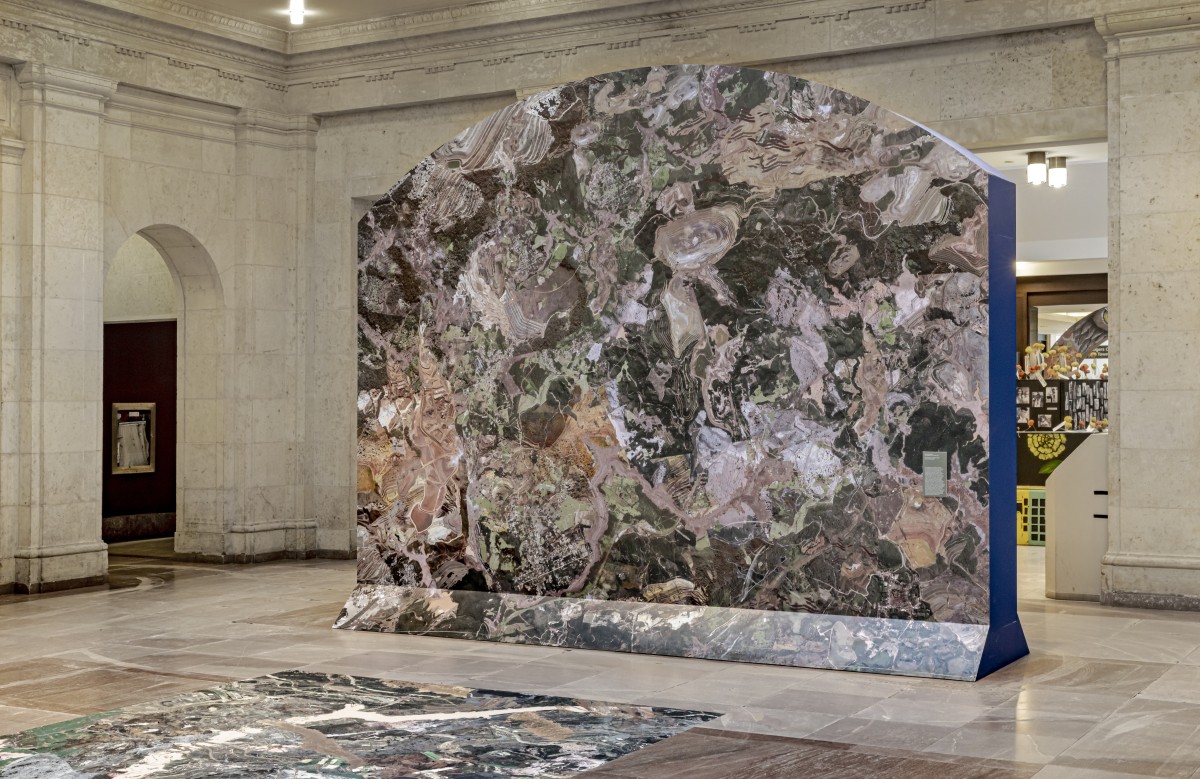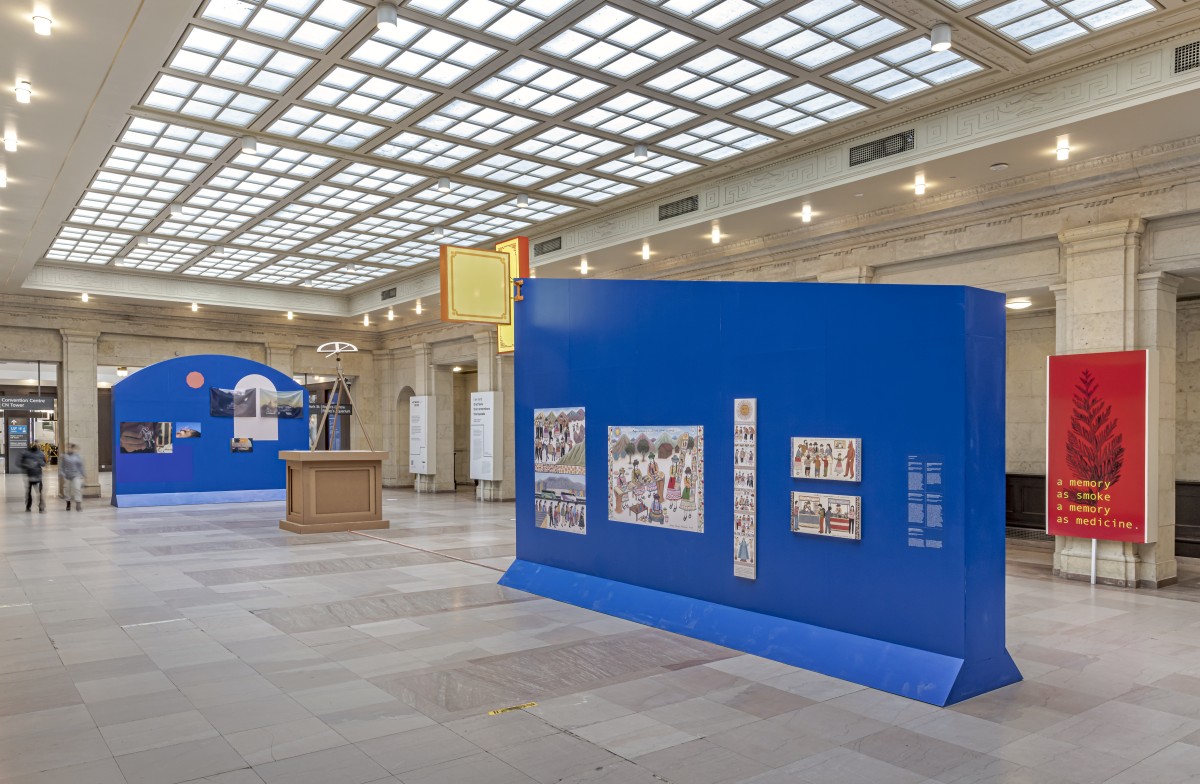Emerging Curator Q&A with Maya Wilson-Sanchez
May is Museum Month and all month we’re chatting with curators to learn about their art world journey. First up is Maya Wilson-Sanchez, the inaugural curatorial resident at the Gardiner Museum and current curator of ArtworxTO’s South Hub.

Image courtesy of Maya Wilson-Sanchez
Happy Museum Month! Throughout May, AGOinsider is interviewing curators working in a diverse range of disciplines across Canada. To start our month-long Q&A series, we connected with Toronto-based independent editor, writer and curator Maya Wilson-Sanchez. Her curatorial journey began years ago but has recently taken off.
Last month, the Gardiner Museum announced her as the recipient of its inaugural Curatorial Residency and she will be producing an exhibition for the museum this winter. She is currently curating a three-part exhibition series for the City of Toronto’s Year of Public Art (ArtworxTO)’s South Hub, and teaching at OCAD University. A graduate from OCADU and University of Toronto in Art History, Wilson-Sanchez is interested in processes of history-making and building connections between local and international communities to foster networks of exchange and solidarity.
She was an Editorial Resident at Canadian Art, the Associate Editor at C Magazine and a Curatorial Resident at the Art Museum at the University of Toronto. She also received the 2020 Middlebrook Prize for Young Canadian Curators. Wilson-Sanchez has worked in numerous galleries and art museums, including the AGO, Gallery TPW, Onsite Gallery, MKG127 and the Textile Museum of Canada, and has curated exhibitions at Xpace Cultural Centre, the Royal Ontario Museum and the Art Gallery of Guelph.
AGOinsider: What motivated you to become a curator?
Wilson-Sanchez: When I was younger, I became amazed at what art could do. Through artworks, I found myself experiencing other worlds, time-travelling, and learning—always learning so much. I quickly understood that art has the potential to challenge normative narratives and present different perspectives. It’s one of the few things we have that lets us experience other ways of knowing and being.
AGOinsider: What do you think a curator’s primary responsibilities are?
Wilson-Sanchez: This is an ongoing question in my practice, and my answer changes frequently. I feel that almost every exhibition or program I curate demands something different and specific of me. My responsibilities and duties vary depending on the purpose of the project, who I am working with, and which communities I’m responsible to.
Last month, I finished writing an article for the Journal of Visual Culture about reparative art histories, and this research made me rethink curatorial practice too. I’ve been asking myself: how can curators support healing in their communities? How can curators facilitate their community’s creative needs and desires to instigate repair from systemic violence? Can curation be a reparative practice?
AGOinsider: What excites you the most about being the inaugural Curatorial Resident at the Gardiner Museum?
Wilson-Sanchez: I am beyond excited to be part of the curatorial team at the Gardiner Museum during this residency. I have worked primarily with contemporary art, but this opportunity will allow me to explore ancient artwork in multiple historical collections. The exhibition I have planned for the Gardiner places pre-colonial ceramics from Ecuador and Peru within a continuous chronological line of ceramic production in this Andean region right up to the present moment. By including a number of contemporary ceramic artworks by Andean artists, the show also works towards problematizing certain binaries important to museum collection and artwork valuation: the authentic vs. the copy and the historical vs. the contemporary.
The residency also includes fieldwork and travel, which I have never had access to when putting together an exhibition. I already did a short research trip to New York City, and later this summer, I plan to do fieldwork and research at museums in Ecuador and in rural communities. This is the first exhibition I will do with direct ties to my hometown in the Ecuadorian Andes, so it has been amazing to have the support and resources to do this work properly and with the care and attention it deserves.
AGOinsider: How would you describe your individual curatorial approach?
Wilson-Sanchez: My curatorial practice is shaped by values of equity and generosity and a philosophy that understands embodied encounters with art as having the potential to significantly shift or create ideas and relationships. Meaningful intergenerational and trans-cultural collaborations have shaped my practice throughout my emerging career, and I continue to prioritize this kind of collaboration and exchange in all of my projects. My work is also very interdisciplinary. In the past, I’ve worked with scientists, poets, storytellers, and philosophers, and this summer, I am working with artists, educators, gardeners, and florists for an artwork that I’m commissioning for my exhibition, I am land that feels, which opens next month at Union Station and in off-site locations.
AGOinsider: Is there a curator working today whose work you especially admire? Why?
Wilson-Sanchez: I had the pleasure of working with Candice Hopkins on the exhibition Double Vision, currently on view at the Textile Museum, which presents work by Nunavut artists Jessie Oonark and her daughters, Janet Kigusiuq, and Victoria Mamnguqsualuk. I learned so much from Hopkins, and it was inspiring to see her create such a dynamic matrilineal space within the museum. I also admire Crystal Mowry and how she works with artists and other curators. She is incredibly generous with her support and knowledge, and her practice is refreshingly critical and full of care.
For more information on the Gardiner Museum, visit https://www.gardinermuseum.on.ca. Curious to learn more about the ongoing exhibition for ArtworxTO’s South Hub by Wilson-Sanchez? Visit https://www.artworxto.ca/hub/south-union-station/exhibition/i-am-land for more details.
Stay tuned to see who is up next in our month-long curators Q&A series, celebrating Museum Month. Don’t miss it by signing up to AGOinsider to get the next story sent straight to your inbox.


